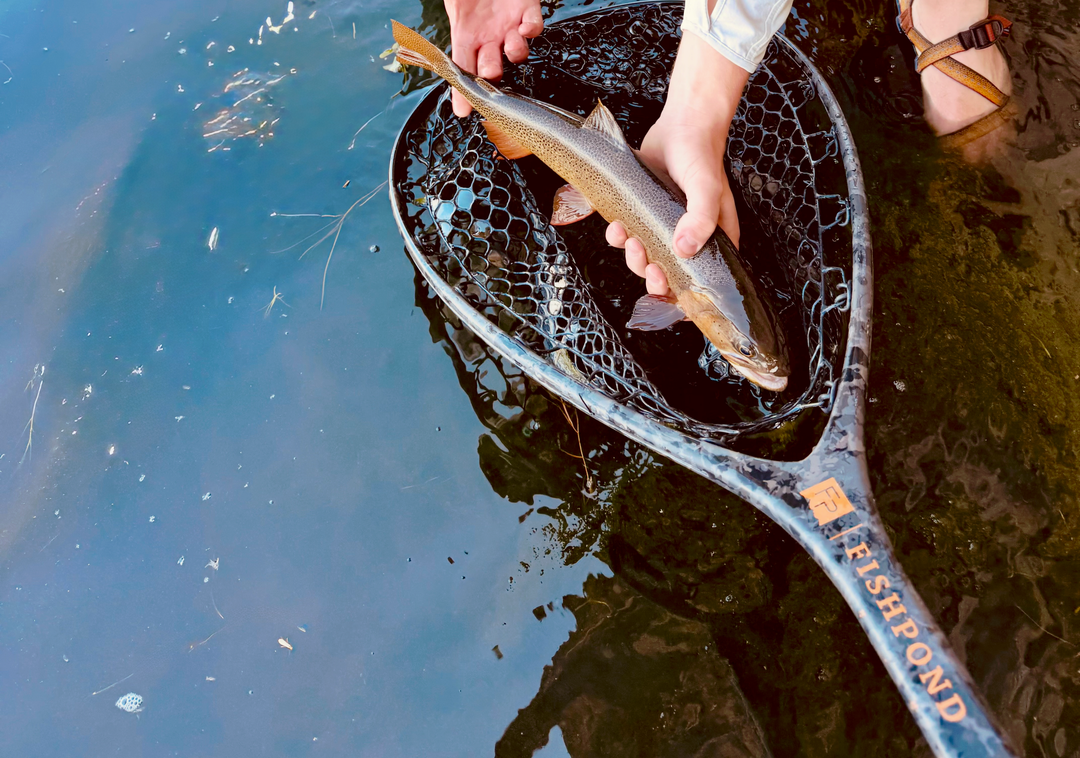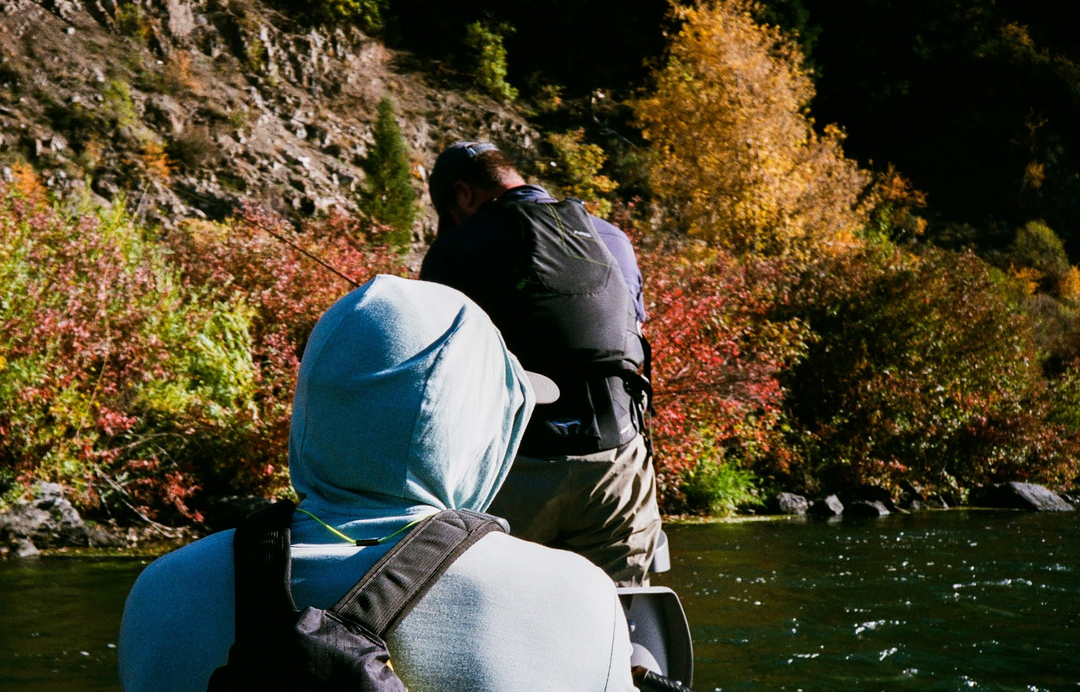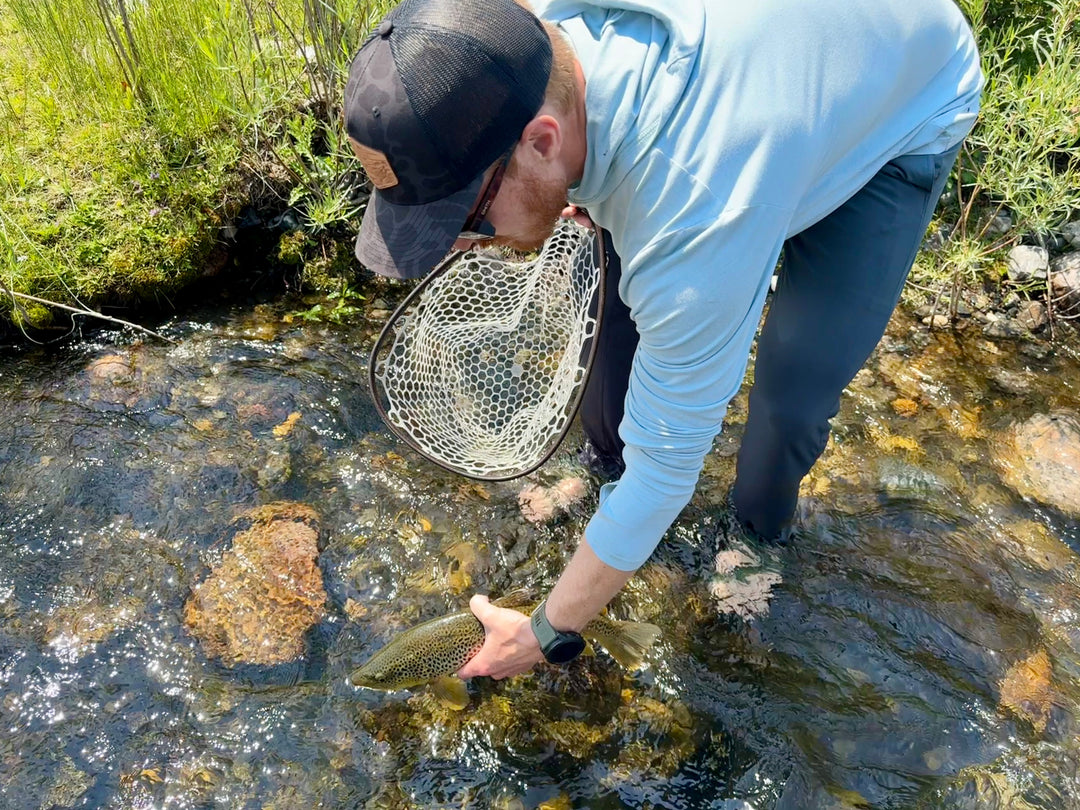How Kelly Galloup Changed How I Fished Streamers

2 Tactics that Radically Changed my Streamer Fishing Success in 2024
As we head into the new year, I wanted to take a moment to reflect on my 2024 fly fishing season. It was a year filled with ups and downs, but ultimately, I was able to land more quality fish than ever before. The journey was as rewarding as the results, and I learned a lot along the way.
One of the highlights of my season was floating more mileage than I ever had before. Covering more water allowed me to explore new fishing spots and discover hidden gems that I might have otherwise missed. It also gave me the opportunity to refine my techniques and adapt to different fishing conditions.
Another significant factor was finding a fishing partner who shared my passion and approach to fly fishing. Having someone who was equally dedicated and willing to put in the early mornings and late evenings made a huge difference. We pushed each other to improve and celebrated each other’s successes, making the experience even more enjoyable.
Fishing with guides, both on paid trips and with guide friends, was another game-changer. Their expertise and insights were invaluable, and I learned so much from observing their techniques and listening to their advice. Investing in better equipment also played a role in my success. High-quality gear can make a noticeable difference in your performance and overall experience on the water.
One of the most important lessons I learned was the value of practice. Devoting time to practice casting and retrieving, rather than just trying to snag fish, paid off in spades. It’s easy to get sucked into in the excitement of fishing, but taking the time to hone your skills can lead to more consistent success.
Reflecting on these experiences, I’m excited to apply what I’ve learned to the upcoming season. The combination of covering more water, fishing with the right partners, learning from experts, using quality equipment, and dedicating time to practice has set a new standard for my fly fishing adventures. Here’s to more fish in 2025!
More Fish in 2025 - A Recap of My 2024 Trout Fishing Season
2024 was by far the best year I've ever had fishing. Now there were several reasons for this.
-
I floated more mileage than I ever had in a season
-
I found a partner that wanted to fish the exact same way that I did
-
I fished with guides ( paid trips and guide friends)
-
I got the better equipment
-
I devoured fishing content in 2023
-
Devoted a substantial amount of time to practice versus trying to actively catch fish.
While there are almost endless variations and methods in fly fishing most people break then up into the standard 3: dry flies, nymphs, and streamers. Like most fly anglers I love dry fly fishing and I'll nymph whenever I have to, but it's typically a last resort. While my dry fly and nymph fishing improved last year the biggest change I saw in my trout fishing was actually with streamers.
I've always loved fishing streamers, but streamers never was as reliable as I hoped or wanted. I never saw the consistency I saw from matching a natural drift with dries, hoppers, or nymphing. That all changed in 2024 and as I reflect on last year I think I can boil what I learned down into two tactics:
-
Stripping method
-
Streamer selection
Now these sound like unbelievably minor tactics that realistically can't make that big of a difference while fly fishing streamers, but I've learned hanging around guides that the best changes tend to be the small changes and tactics that make the biggest impact on success. I'm also talking specifically for more experience anglers. If you can't cast a fly rod and put your flies anywhere near fish having the correct weight doesn't mean diddly. What do I mean by "small changes" or "tactics" that these guides are making?
When guides see a little bit of fray in their dropper line, they cut it off and retie. When the flies are 15 inches apart and they should be 18 inches apart, they cut the line and they tie it correctly. When the right fly should be a size 22 dry fly but you're using a size 18 fly, so you can actually see it, they cut it off and put on a size 22 fly. When you see trout are eating emergers and you put a bead head to get the fly deep, they use a fly pattern with a foam head so the fly doesn't go as deep and will sit higher in the water column where emergers actually are. One of Joe Humphreys' most famous sayings is "A single split shot is the difference between a great day and a good day fishing" Changes like this go a long way in your success rate and starting to think this way has a compound effect in your success rates.

Why I spent more time Fly Fishing with Streamers in 2024
One of the primary reasons I have been fly fishing streamers so much more this year than previous years was the partners I was fishing with the bulk of the year. Partners from years past primarily wanted catch rates and leisure time on the river which resulted in booze and bobber rigs. I started fishing with a former guide that left the fly fishing guide scene after several years for “a smoke-show to marry and not having to row in 60 mph winds in 20° weather.” After years of guiding clients and using similar tactics, he was wildly uninterested in nymphing which is typically the best bet for most anglers, particularly for clients who don't want to learn and just want to feel a tight line. We both have full-time jobs so our time to fish was limited to dawn, dusk, and weekends. He wasn't afraid to wake up early or get out late which just so happens to be when most strikes occur for many anglers while fishing streamers.
Now, when I say this guide was a better angler than I was/is I mean he blew me out of the water in every conceivable way. Tactics, rowing, rigging, it didn't matter. He had so much more knowledge and experience in time on the water in a single year of guiding than I had in multiple years of fishing as hard as I could. So we started fishing together it was extremely lopsided in terms of amount of fish and quality of fish caught. This also includes the substantial disadvantage he had of having a subpar rower comparatively. If you don't know how much a good rower can impact your ability to catch fish check out the article here.
Streamer fishing has always been my favorite style of fishing ever since one incredibly rainy day with my brother below the Beaver in Northwest Arkansas. We caught more trout than we've ever caught in a single day and from that day on the tug was in fact the drug. Over the years I've had varying success streamer fishing, but it was never a consistent and reliable method to catch fish for me. I really hate fishing trout waters with a bobber/strike indicator with an absolute passion so inevitably I would just turn to stripping an olive wooly bugger to avoid having to nymph early on as an angler.
When I started fishing with Dane, I started to see streamer fishing, although doesn't catch as many fish as other forms of fly fishing fishing, could still be a reliable way to consistently catch fish almost every time we went out. Now we had success, but I was getting my ass absolutely handed to me every single time we went fishing. As a former collegiate athlete and Junior Olympian, I’m a tad competitive. I didn't enjoy getting whooped every single time we went fishing, so I started devouring everything I possibly could around streamer fishing that could give me the slightest edge to claw my way back to be somewhat competitive. That quest for streaming knowledge inevitably led me to Kelly Gallup.
Learning New Ways to Retrieve a Streamer
How I Used to Fish Streamers
Before I started consuming everything Kelly Gallup preached I would fish streamers the way Gallup calls a "rope puller". A rope puller is the standard pull the line / retrieve the line with various degrees of distance and speed. Most anglers this is their go to for pretty much every environment regardless if its a lake, small stream, big river, slow water, or deep water. Most anglers I've fished with over the years think speed is the solution as well, but small trout and sculpin swim and move in different ways and burning line trying to imitate small trout or a fleeing bait fish isn't always the solution. Which I never even thought about until Kelly explained it.
Kelly can explain with far greater depth than I can hope to image why "pulling the rope" isn't the best option, but it essentially boils down to its a one trick pony and you need more tools in your tool belt. Well if just stripping line isn't the only way what other methods are there to attract fish in a river? While Kelly talks extensively about sinking lines it's actually more of technique and systematic approach targeting trout than gear, which means you can go out and try this method this weekend with your standard floating line and whatever trout streamers you may have laying around.
The Method - Active Retrieve for more Control
For fly fishers looking to target trout (preferably brown trout obviously because they're better than rainbow trout) with streamers the Jig and Jerk Strip are king. After 12 months of consistently catching large fish each month I am fully convinced it's the ticket for a tight line on streamers.
With both the jig and the jerk strip you are using the rod to move the fly and not the line (bass fishing concept from the competitive conventional tackle world). This allows the fly to move more naturally and also gives you the ability to make the streamer do different things underwater instead of just darting forward and pausing between strips. With the jig strip you will lift your rod tip high (high meaning a couple feet off the water since your rod tip should almost be touching the water when you're fishing streamers) and then bring it back down, retrieving the line as your rod goes from its highest location to it's lowest location. With the jerk strip you'll use the rod tip to twitch the streamer horizontally either upstream or downstream. This is a little bit easier to digest watching someone do it compared to reading it so I would recommend checking out this link of Kelly Explaining it.
I read Kelly's book and that helped expose some of these concepts but what really moved the needle the biggest way was when Kelly launched his new YouTube channel which is a wealth of knowledge on all things fly fishing, fly tying, and of course all things streamer. Through a rabbit hole of youtube content Kelly said two things that really stuck out to me:
-
"Changing your retrieve to move the fly with the rod instead of the fly with the line will make the single biggest impact on your streamer success."
-
“We never practice fishing we just fish - cut the damn fly off and focus on the retrieve so you know you won't catch fish.”
Dane and I had a Dawn Patrol float planned for the next morning so I thought what better time to try this new method out with these two quotes seared into my brain. That day, I put the prospect of hooking fish completely out of my mind and focus exclusively on practicing the method until I could do it without thinking (I also practice my fly cast and making sure my fly was as close to the bank as I could without snagging). The method felt incredibly awkward at first that I literally had a count in my head “1” whenever I jigged or jerked the rod and “2” whenever I retrieve the line. I spent the entire first half of the float just doing this and nothing else - and caught absolutely no fish. By the second half of the float, though it was starting to become a little bit more natural and not as robotic feeling.
I started to get the groove in the routine of the jerk and jig strip and suddenly we came upon some structure of large rocks and logs where fish sit and lo and behold I pulled back to back fish out of two spots that I had previously only seen Dane and Lance Egan pull fish from. I called it a success, not because I actually found some feeding fish but because I practiced the method enough for it to feel natural to actually use it in a high probability fish zone and the bonus was I happened to catch fish. Naturally, whenever you get a fish in the net with a specific method or fly, whatever it may be, it gives you confidence in the future and the more and more I used the jig and jerk strip over the course of the year the more and more fish that ended up in the net. It truly was in odds multiplier and something all fly anglers interested in streamer fishing should put into practice. LINK TO ARTICLE ABOUT ODDS MULTIPLIER
Streamer Rotation & Streamer Size
Now that I had a proven technique that was hooking fishing with seemingly relative ease compared to my old method the next area that helped get me the most strikes was choosing the right fly. When I first started fly fishing I basically just picked a random fly from the fishing reports that looked different when I wasn't getting any action. I didn't have a method to picking the right fly patterns and that was true with streamers as well. Thankfully modern media has so much great educational content that I was able to find a method of how fly fishers should rotate through their streamers from Kelly and then get some great advice from my buddy Lance Egan.
Streamer Rotation
When I first started looking at streamers I didn't know they were tied in certain ways that had a great influence on how the fly moved in the water. They were all essentially artistic expression and pretty much didn't mean anything because I just fished the same 2 streamers that had worked in the past completely oblivious to the fact that maybe a certain fly didn't work in fast water, deep water, or wasn't supposed to really be used on a floating line. A streamer was a streamer.
After coming out of that youtube rabbit hole of Kelly Galloup content I mentioned earlier I emerged with a method I could use to select streamers to use and then what to switch to when one wasn't working. That method was rotating colors and then after rotating through colors with no luck switching the design of the fly.
I typically always start with a sparkle minnow now regardless of the size of river or water clarity. It covers several different colors at once, but frequently it’s not the ticket. So when that doesn’t work out of the gate I start rotating colors in the same size (Kelly Galloup has talked about this repeatedly so this isn’t anything new). What I started to experience was the exact same fly and the exact same size but a different color would work in the exact same hole after I already finished it several times. Sometimes they're just key on the color and that is the ticket.
After color, then I start looking at design/function of the fly. This is a broad sweeping generalization, but I generally streamers in three categories: push, glide, hover.
-
Push: These flies push water as they move through the river. Frequently, they have larger deer hair heads that cause it to push water. Some flies in this category are trout slider and the sex-dungeon.
-
Glide: These flies don't push water, they slip through it. Flies that emulate this don't have as big bodies and our much thinner in design. it typically have bead heads or a cone head and narrower profiles. Think peanut envy's and woolly buggers
-
Hover: These flies could in theory rest in one of these other categories their intended purpose is not to dive as deep and tend to hold water versus just plunging to the bottom. The best example of a fly like this is the zoo cougar in my mind.
So the method I follow now is:
-
Start with a sparkle minnow or whatever your confidence fly is
-
Run through the color scheme with push flies
-
Run through the color scheme with glide flies
-
If the water is applicable for something that's more suited to hover put on a hover fly and then rotate through its colors.
The reason I like following a method like this is simply because it's a process I can follow so when something doesn't work I have a plan of what to do next. If fly A doesn't work, I'll do fly B. If fly B doesn't work I'll do fly C. If she doesn't work I'll do D. I go down the list until I find feeding fish. Another little tip is I lay out my flies on my pack or boat box so I can see which ones are used in which order and then rotate according (again kudos to Galloup). I'm just reiterating that somebody that has more decades experience streamer fishing than I have being alive on earth and put in a practice. These things made a huge difference in my success as I consider myself an average angler.
Quick Links - my secret “weapon”
One comment you may have is that means you're changing flies almost constantly. That's a pretty obnoxious process and I am 100% agree with you. After several rotations of different flies in the method listed above, I realize that I started to fish flies that weren't working a lot longer than I should've simply because I just didn't wanna tie another streamer loop knot. I had a small package of quick links in my pack one day I was getting my butt whooped. I thought I'll just use this so I can run through flies way faster because at this point nothing's working and I'm tired of the change of flies.
I ended up changing flies frequently and quickly and low and behold ended up connecting with fish much faster because I could work through the above method a lot faster. Pretty much from that day on I have been using these on every single streamer rig.
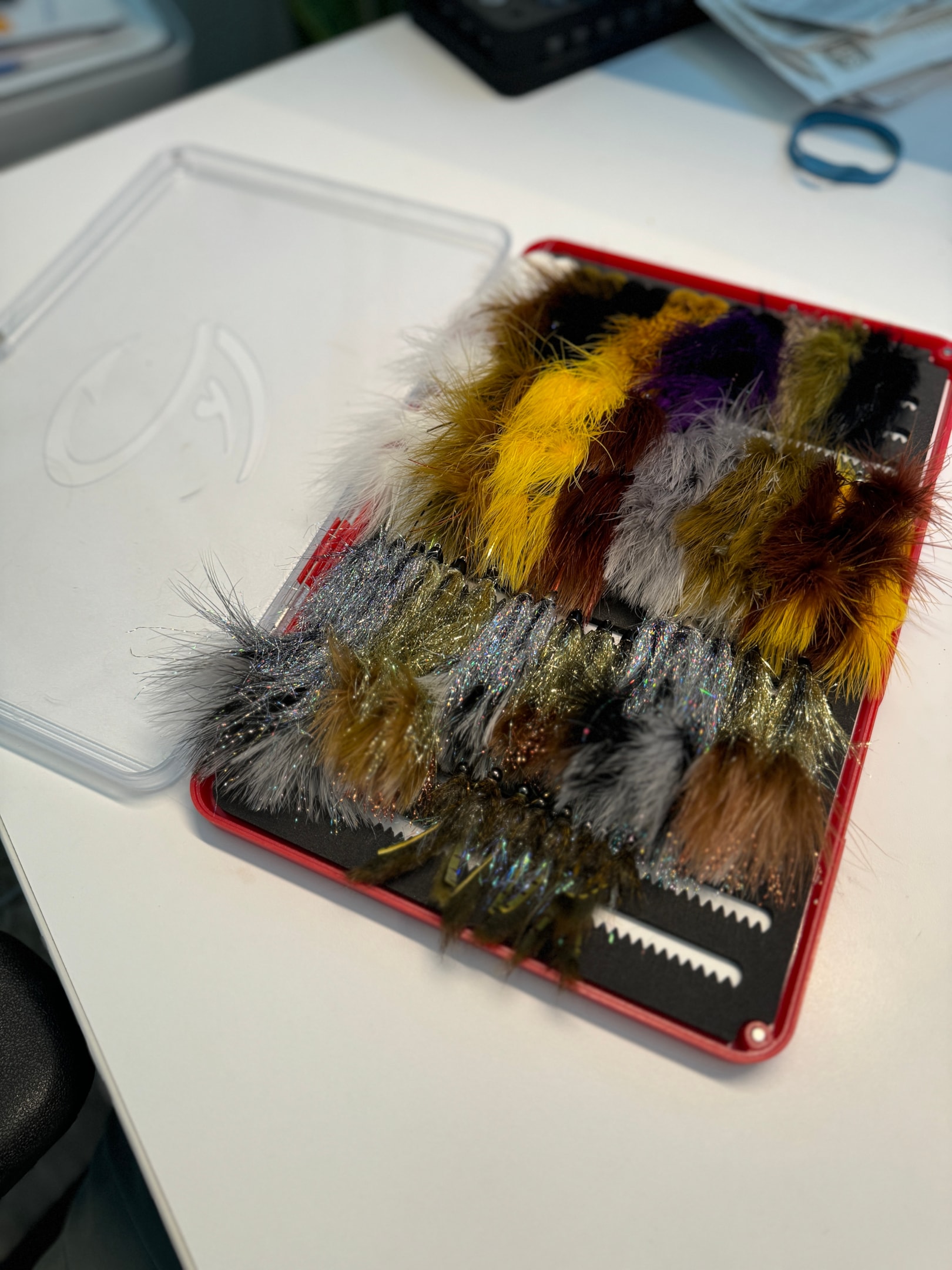
When I brought this up to Dane the industry purest stuck his nose up and gave the normal responses to using quick links: they don't work, they don't have the same movement the streamer loop has, it's another point of failure, etc. To which another buddy of mine Luke, who just so happened to be the pioneering dude behind RiverSmith’s RiverQuiver and quite the accomplished and well traveled angler himself said “my Iceland Pike guide exclusively uses quick links for all of his guiding. So for a guy that trust quick links to hook into 40 inch Pike I think they'll be able to handle an 18 inch Brown pretty easily.” Sure enough I've yet to lose a fish because of a quick link and I have caught substantially more trout because I will not hesitate to change flies because I can do it in seconds. Again, this goes back to the theme that I mentioned at the beginning of this article that small things can make a massive difference when done well.
Another quick comment: Spend money on streamers (tie or buy). If you have 3 different streamers odds are you aren’t going to have that much success streamer fishing. You don’t need another rod - buy flies and put the rod tips you have to work. I spent $300 on streamers and it was the best money I’ve spent to date fishing in the last 7 years.
Fly Size
The second thing that made the biggest impact on my success was fly selection. Now, when I say selection, I'm specifically talking about the size of flies you're selecting. My fly box was full of relatively large streamers. When I mean relatively large I'm talking 5 to 6 inches. I saw so much more action with the jerk and jig strip method, but one of the things I started to notice was I started seeing tons of fish swipe at these flies, but not actually commit to grab them. For every one serious connection and strike I felt there was probably 10 that just swiped at it and moved back to their spot on the river. It really started to perplex me.
After an incredibly productive 2 hour float one afternoon with a dozen hook ups we also lost a decent bit of flies in the process. That led me to swing by Fly Fish Food and share my recent experiences with my buddy Lance (@lanceeganflyfishing) and one of the things that he told me during that conversation made another substantial jump in my confidence and success rates. One that put more trout in the net faster mixed with my new jig and jerk strip.
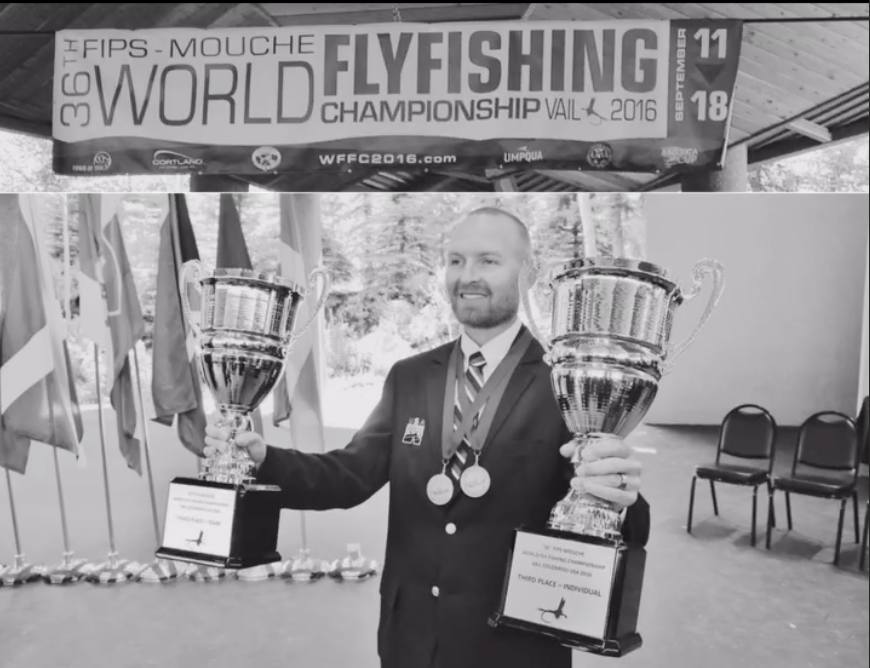
As I was explaining to Lance, all the success we've had and what I was seeing with so many attempted swipes and no actual commitment. He was smiling, nodding, and said “yeah those are way too big of flies.” Those flies are great during spawn and spring seasons, when fish are aggressive and hungry, but for the bulk of the year when that's not the case, those are just too big to move the overwhelming majority of fish.” He recommended using something about half the size that I've been using and to see what type of success I have keeping everything the same, but just reducing the size of the fly by ⅓ or half the size.
He reminded me about the content shoot we did 2 years prior on the green river during the dead of winter. It was dumping snow and there wasn't a boat in sight. Lance used a double rig with something similar to an Egan's poacher and absolutely mopped fish. When I say mopped fish, I mean when we got back to the cabin that night, I asked what kind of day. “It was a decent day probably had about 30 fish”. For us mere mortals a 30 fish day is a lifetime memory, for Lance Egan it was just another 5 hour float on a Tuesday. Another early morning rip was lined up already so I snagged a dozen different smaller for the next morning.

The next morning came we were on the water long before anyone else. It was cold. Mist was hovering over the entire river valley. Eager to put these new smaller streamers I declared I'd fish first and for Dane to take the sticks. Like most things that you feel super confident that are gonna work it didn't. We swapped anglers and Dane immediately proceeded to put one or two fish in the boat in rapid succession. I was back on the front of the boat and was hitting a section of the river with a lot better structure for fish to rest ready to explode on their next meal.
The rest of that float was lights out fishing compared to anything I'd have on that river before. I was making connections every single time I got upfront of the raft. I was pulling fish from places I had never pulled fish from before. All those swipes that happened the previous day turned into connections and fish in the boat for both Dane and myself. After that float, I ordered a dozen sparkle minnows in various sizes as that fly became my golden ticket (on a floating line with a streamer leader too).

Recap:
Using all the tactics I outlined above I had the best float and walk and wade streamer season to date (and I missed the prime spring and summer big fish periods due to hospitalization and surgery). I also did this on the Middle Provo which gets absolutely abused by traffic. So a huge improvement in my 70-75 days I was able to get out and wade fish on my own in a heavily pressured fishery.
Quantifiable Results
-
I got more trout over 20 inches than any other year with a fraction of the time spent fishing
-
Finally caught my first taped 24 inch fish
-
Caught more larger fish in the 18 inch range than I had in the past five years combined.
-
Increased the amount of fish I caught by walk and wade in a boat and on every river I finished.
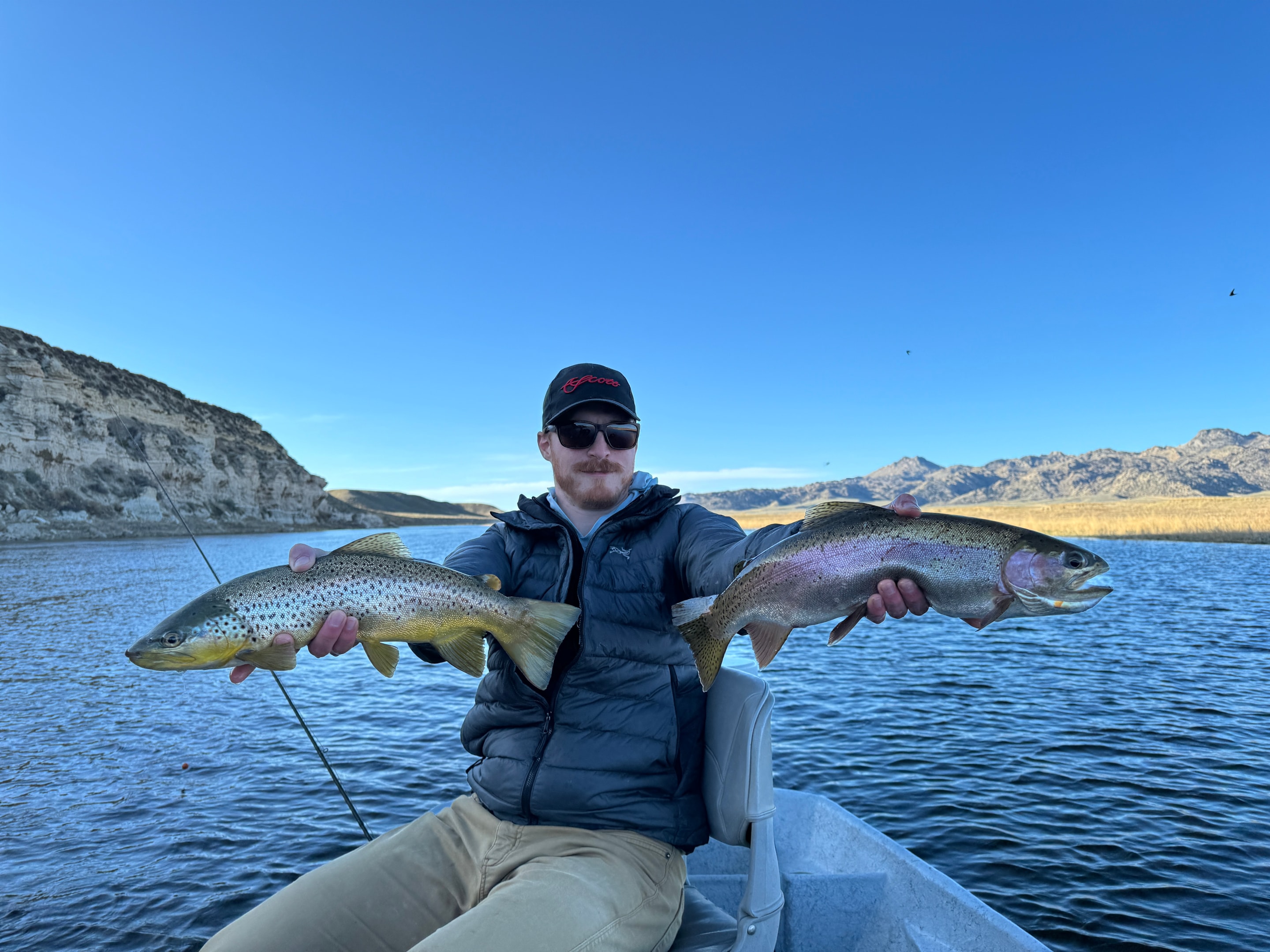
Quick 30,000' View to Remember the Next Time You're Out Fly Fishing Streamers :
-
Retrieve: Move your fly with the rod not the line
-
- Practice till proficient THEN Fish
-
Fly Selection: Get a variety of flies and rotate them systematically
-
- Get good at tying knots or join the quick link team.
-
-
Fly Size: Use a smaller fly the bulk of the time
-
-
Utilize a method to work through when the fish aren’t biting
I hope this puts another tool in your tool belt and will help you have a killer season in 2025!


